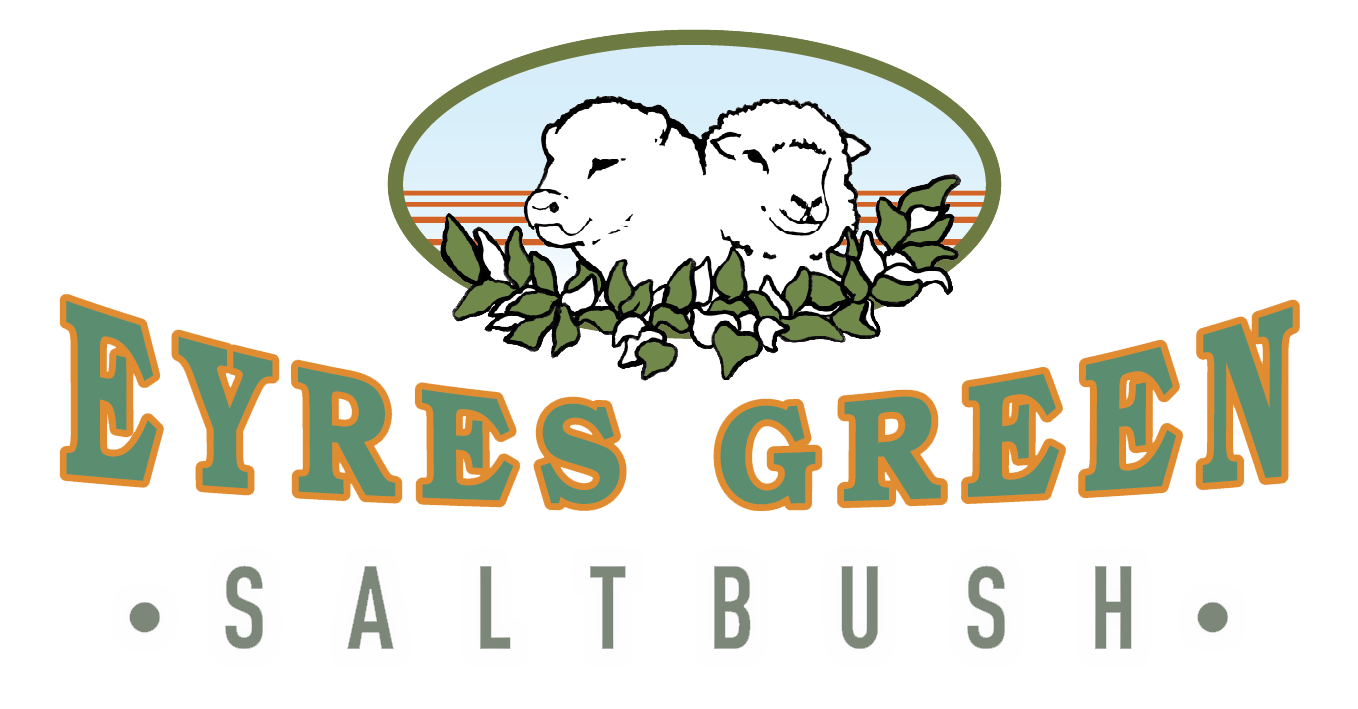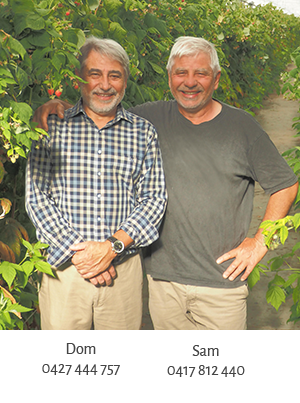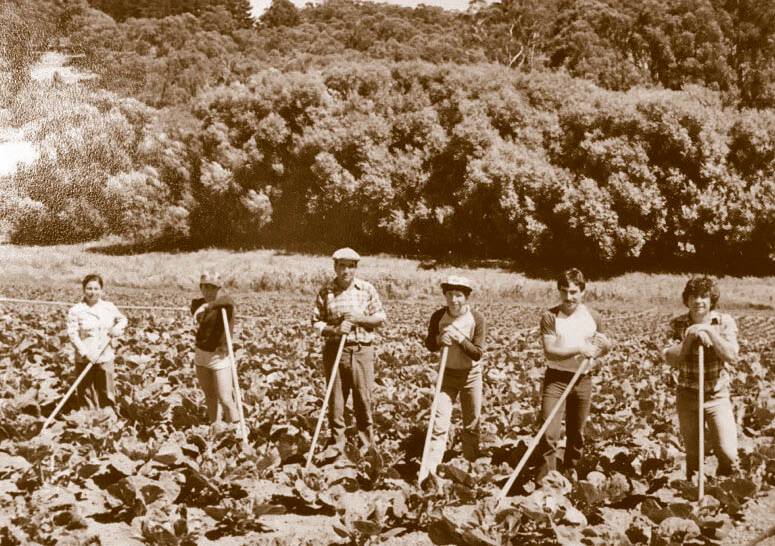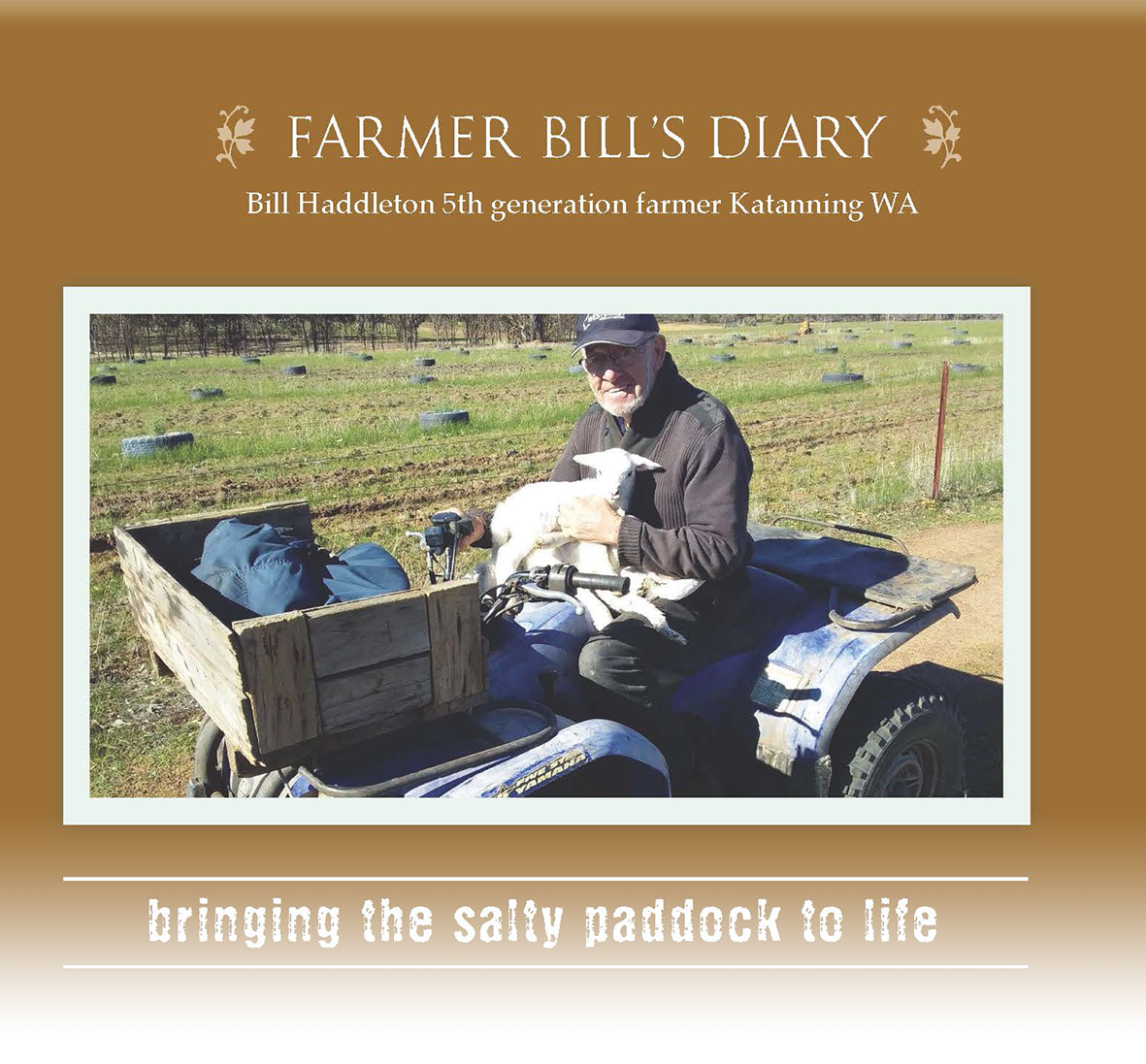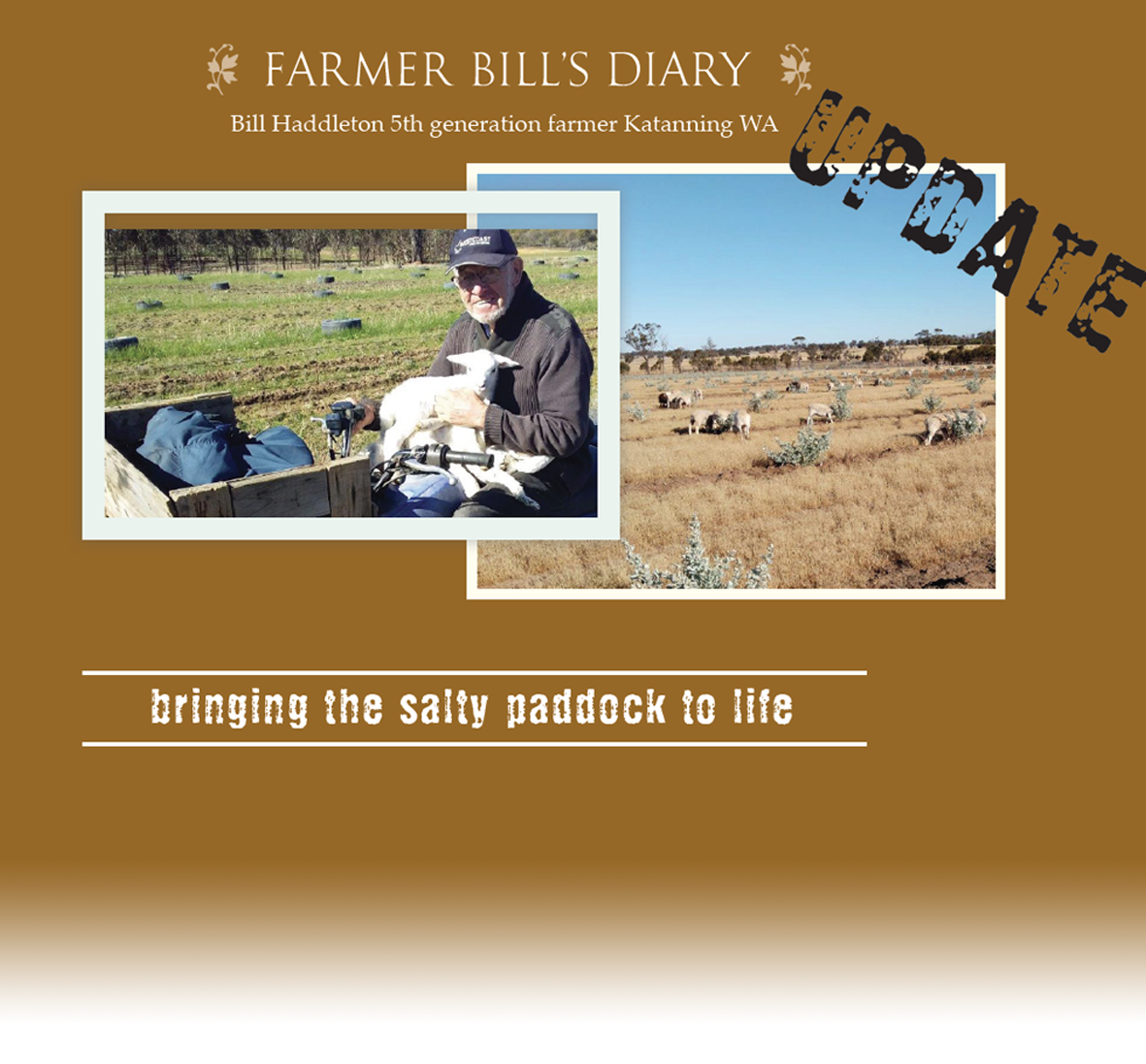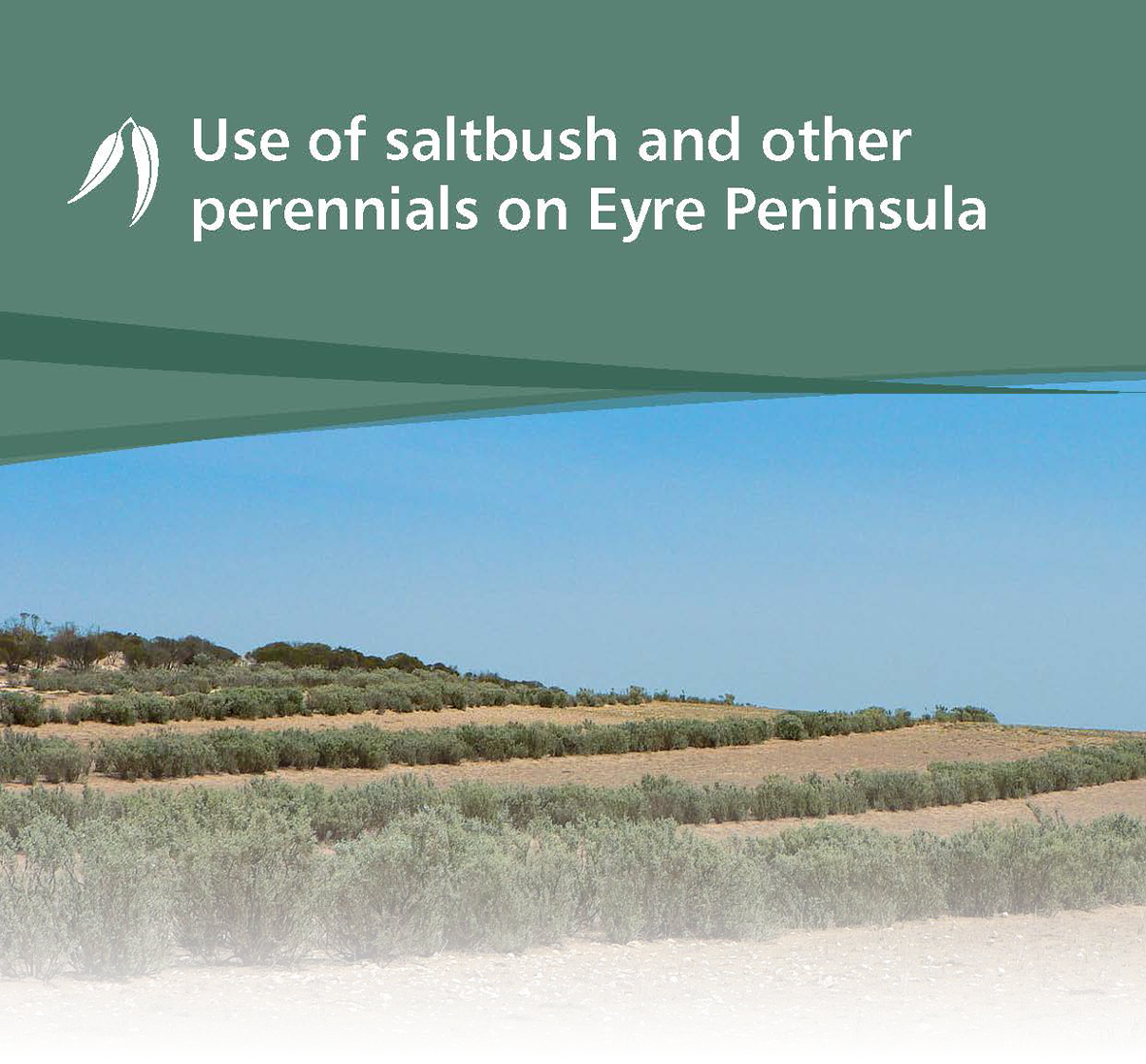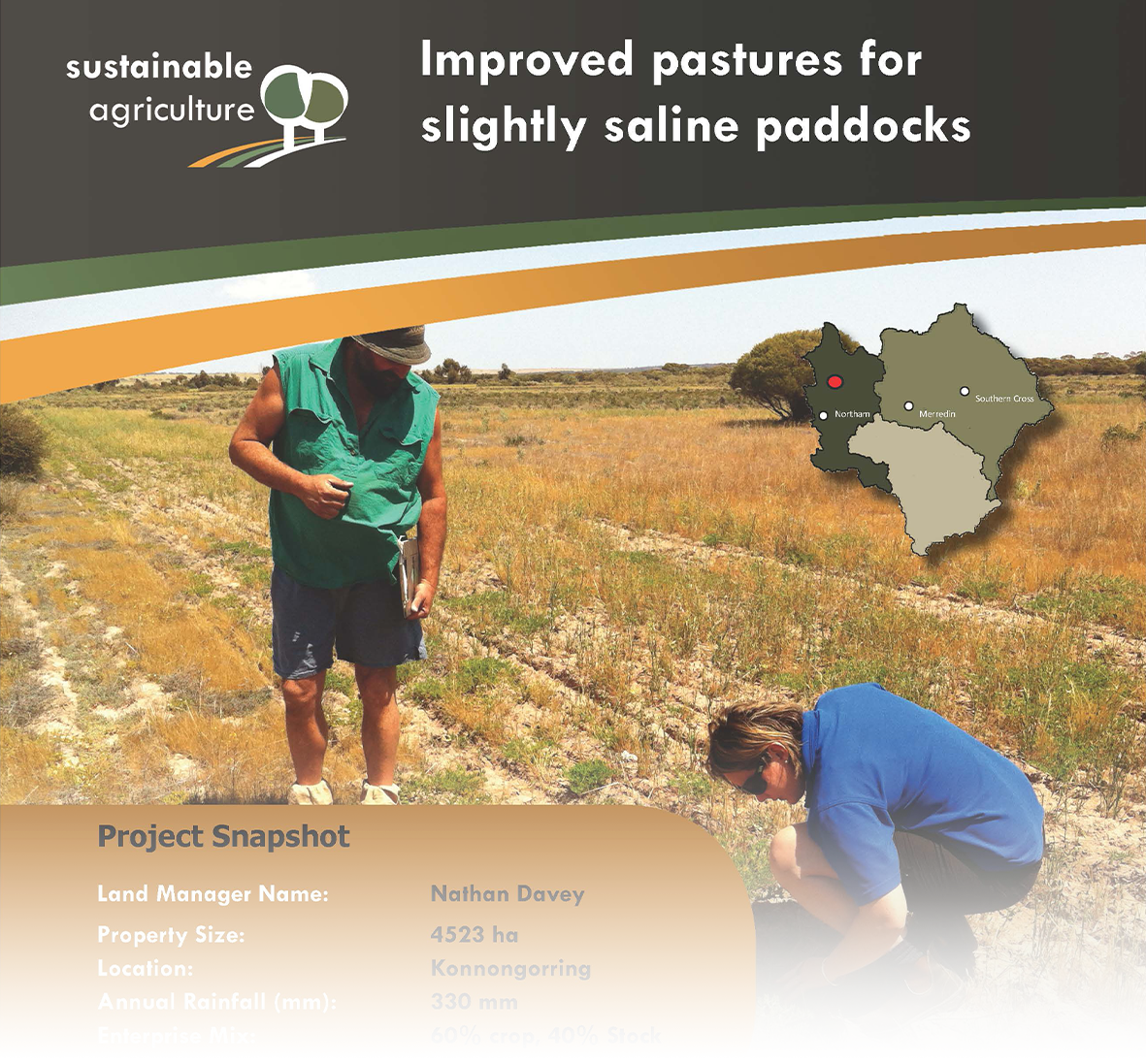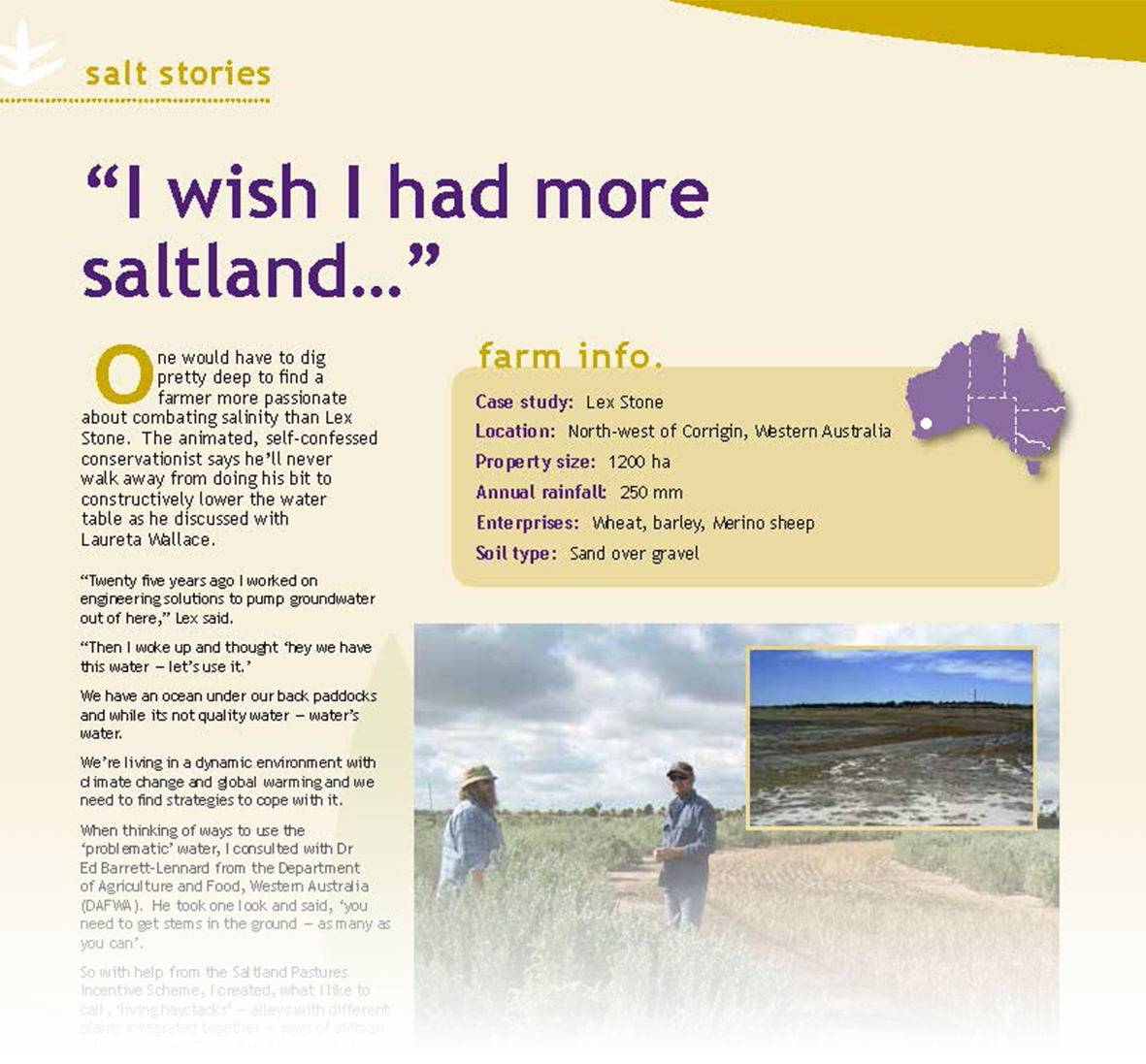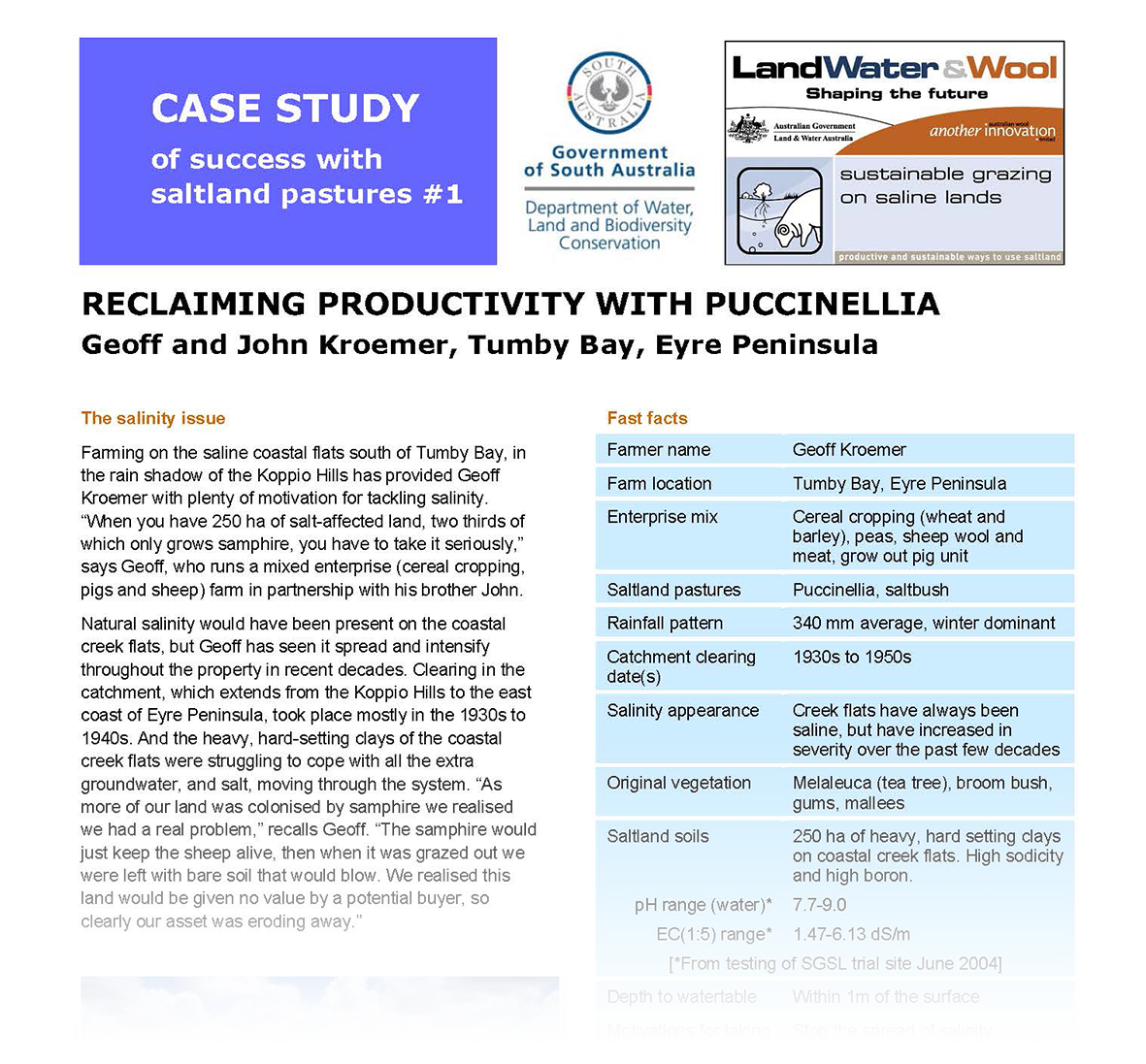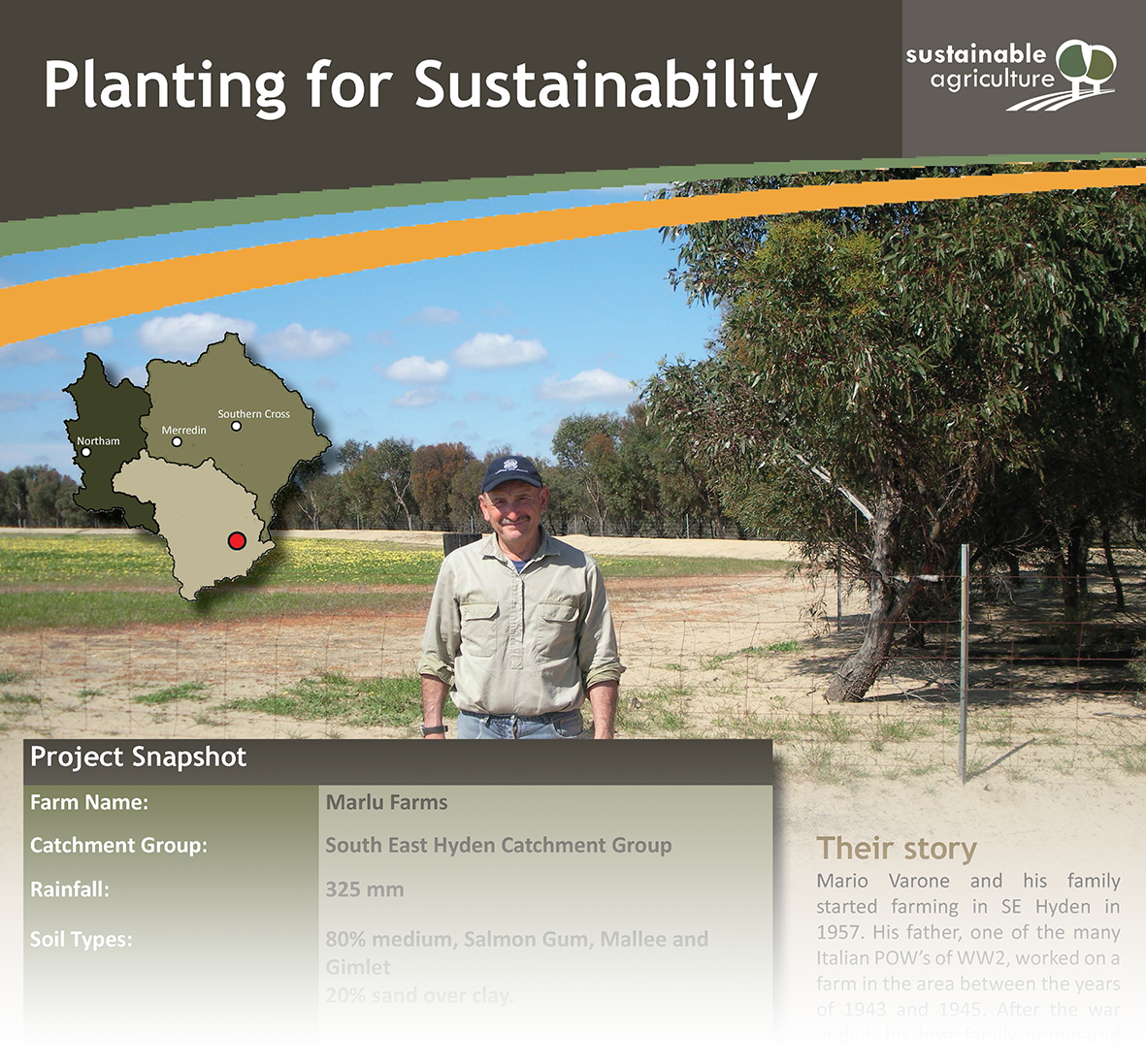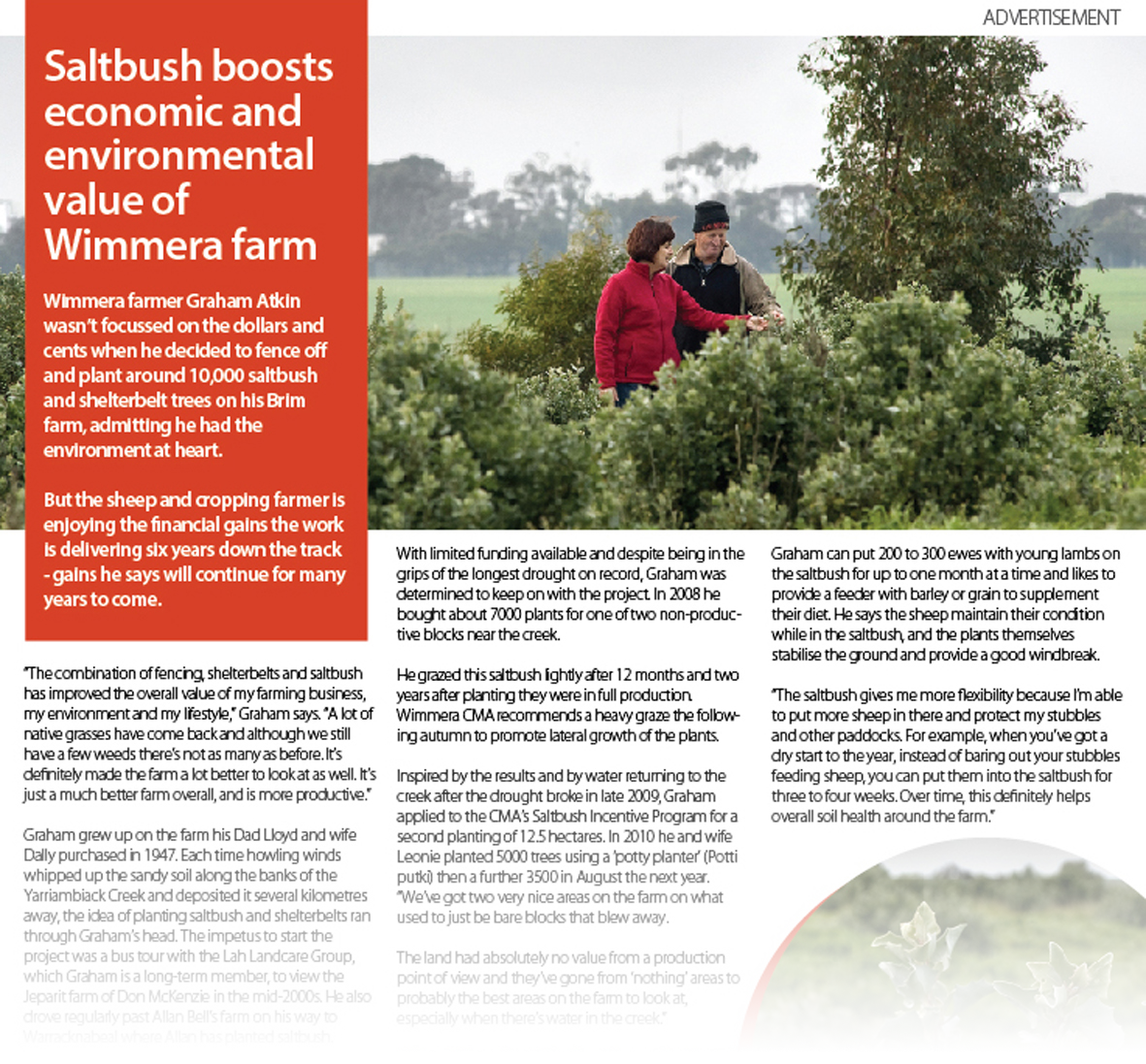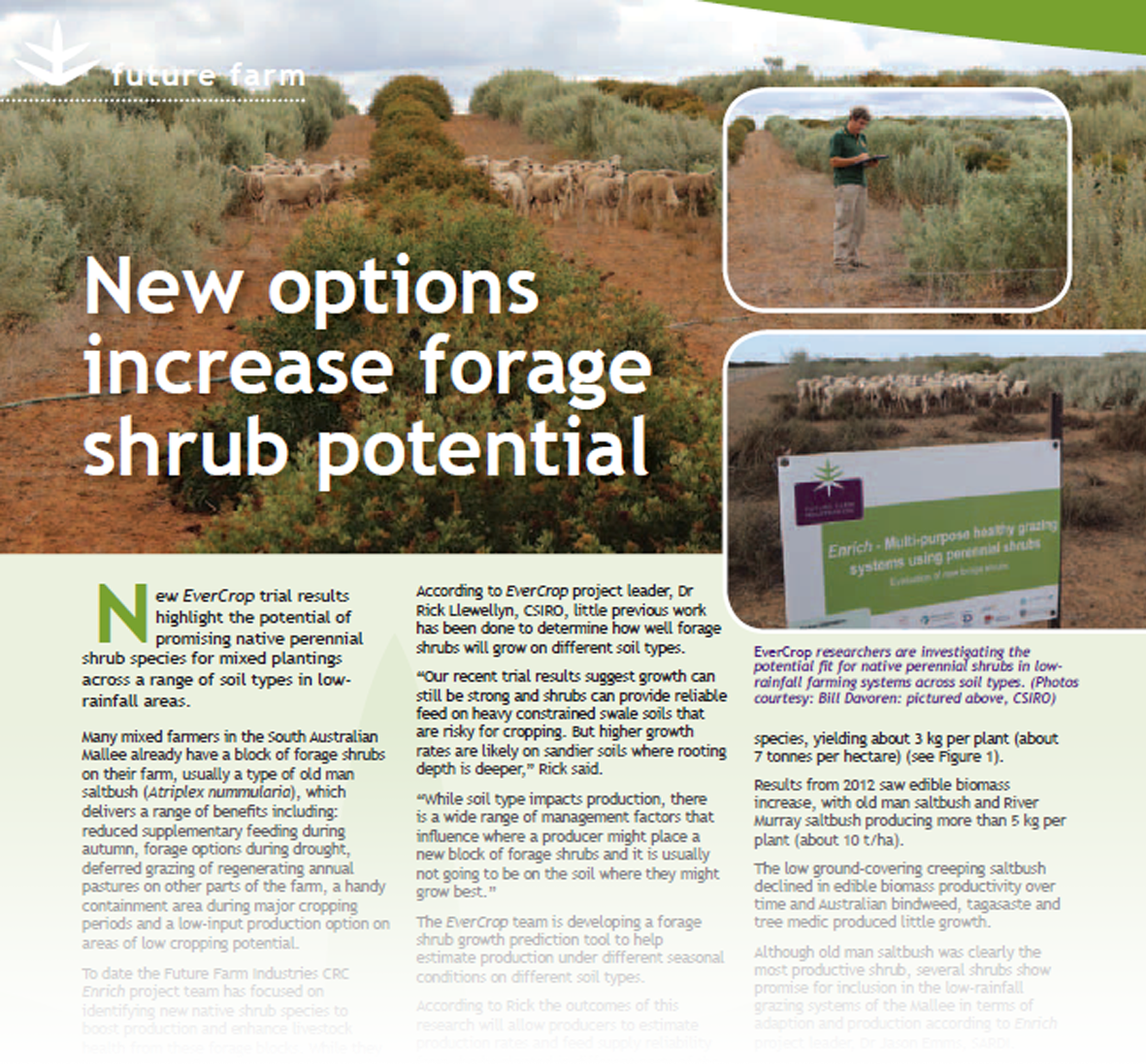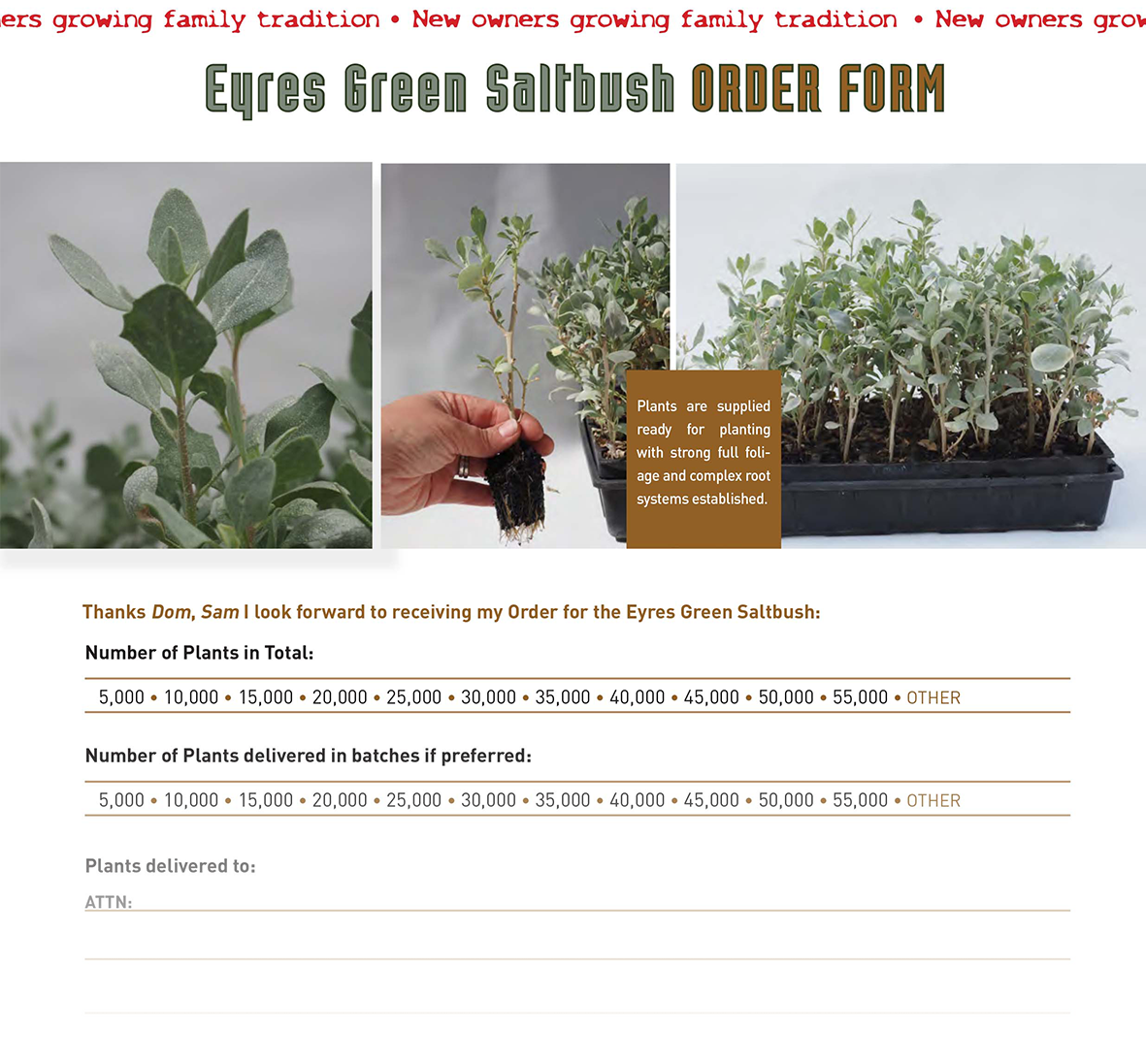Saltbush has drought proofed his livestock operation”
John Arentz
Eyres Green Saltbush
A dynamic ecosystem is vital to the productivity of a good deal of our farming lands. These biotic and abiotic components are linked together through nutrient cycles and energy flows.Understanding these complex interrelationships is supported by research of the many and varied benefits of engaging with perennials, saltbush and in-particular Eyres Green Saltbush.
A cultivar of Old Man Saltbush, Eyres Green was specifically propagated enhancing its recovery after extreme dry seasons, it’s lower horizontal laterals and its palatability as a grazing crop - supplementing rich protein feeds or bridging seasonal crops.
And it is this little discussed attribute, the ‘Biodiversity’ of Eyres Green, that has, where planted, become a major force in the rehabilitation of damaged lands. And critically, being a native cultivar, the ability to do this in an ecologically sustainable way. Assisting farmers turn unproductive land into an asset.
“The saltbush patches also look good and enhance biodiversity: for example, Echidnas can be found in the saltbush area”
Brett Boyd
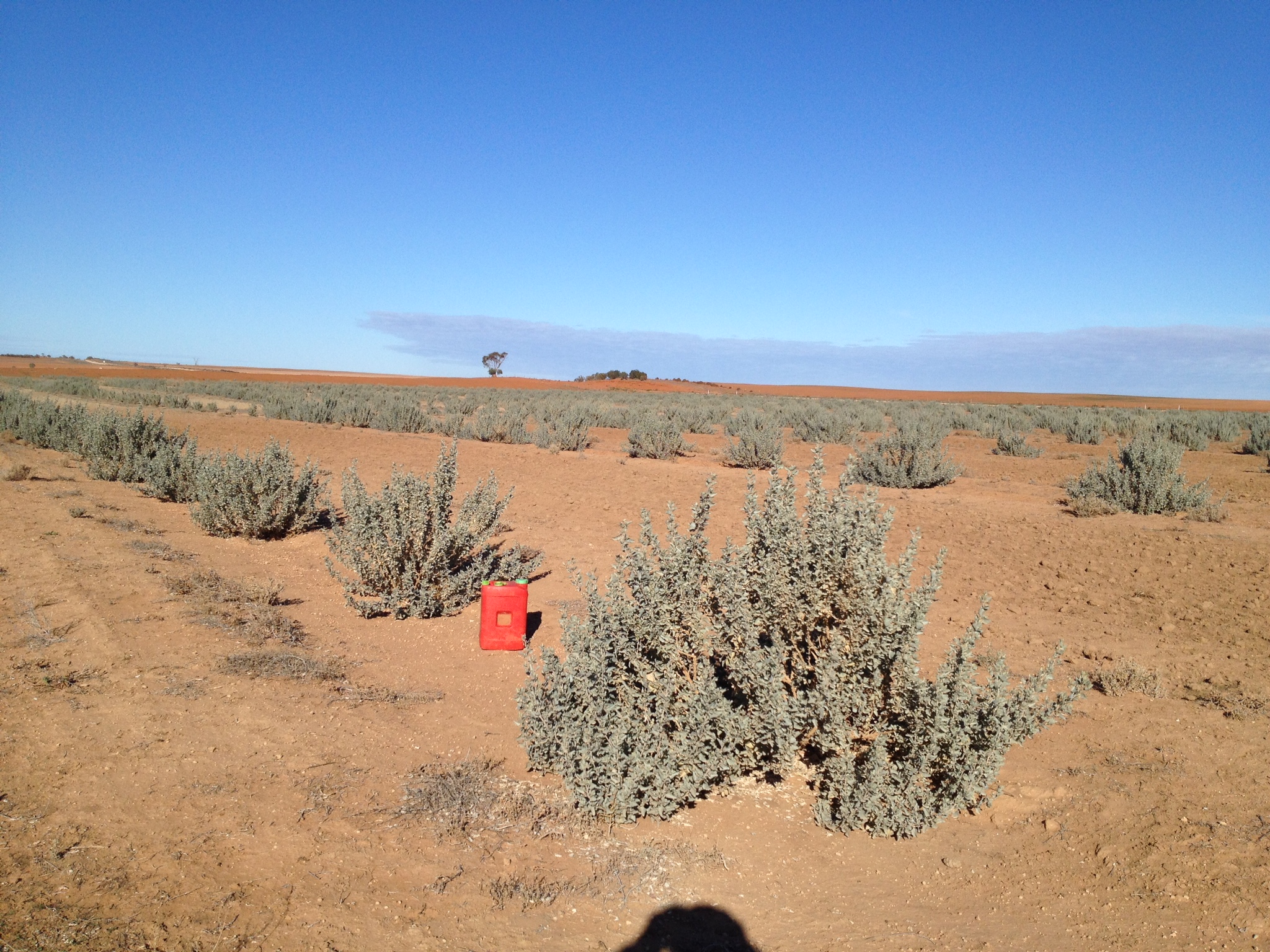
“They are great for joining as they are small paddocks and great conception rates are achieved. They are also fantastic lambing areas because of shelter provided and reduced risk of miss-mothering. Furthermore, because the ewes are drinking so much water, they seem to produce more milk and therefore have more success in carrying twins and triplets.”
Brenton Kroehn
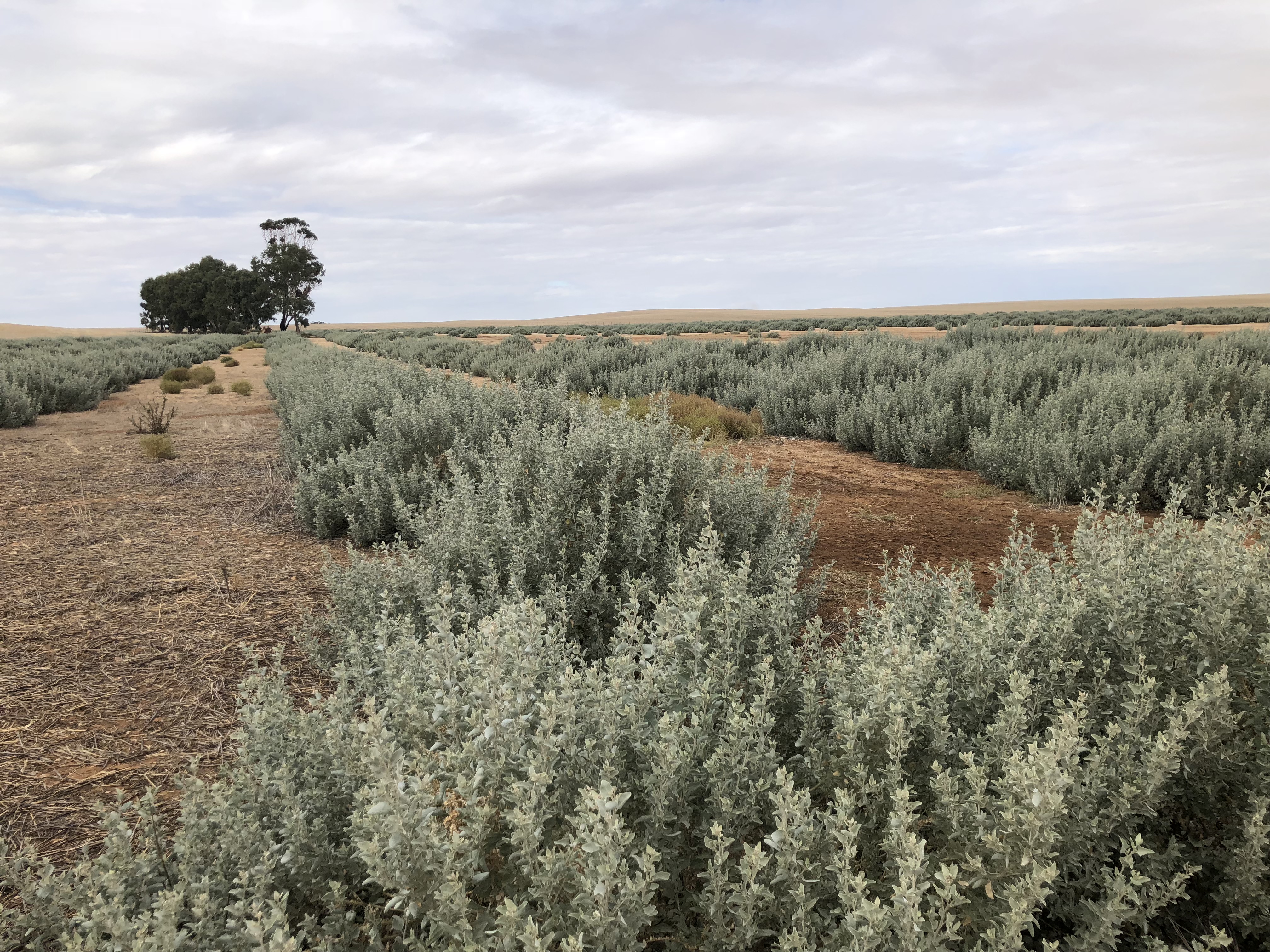
“Planting saltbush has made non-productive land more productive and improved its value.”
Brenton Kroehn

The Eyres Green Saltbush plants were planted last June (8 months ago) and the stock stayed on the paddock for 1 month, the plants are now growing actively so it was time to graze.
The Wimmera Catchment Management Authority and partners have been supporting landholders to establish Eyres Green Saltbush on land prone to wind erosion in the Wimmera region for more than 10 years. Benefits farmers are seeing from strategic grazing of Eyres Green Saltbush include potential increases in productivity on local salt-affected soils that do not waterlog. Wimmera CMA and the many farming groups they support are interested in the potential for saltbush to contribute to decreases in the salinity of top soil to support more salt-sensitive inter-row species to help stock maintain weight. Revegetation with saltbush can also contribute to a reduction in soil erosion, increased stock shelter, and improve farm amenity value.
Alternative fodder shrub species can help fill the autumn feed gap, better use marginal land and cre- ate a feed reserve during extreme dry conditions. They support group efforts to reduce groundwater recharge and the risk of erosion.
“I was surprised at how fast and well they’re growing, I’ve put stock on them after only 7 months......landowner purchased an additional 10,000 ”
What Others Say
PURE WHITE MILK! Clinton has found some exciting benefits, once the Eyres Green gets to a metre high he lets the cattle in that trim the plants down to about half metre high as they eat the leaves and the wood whilst sheep only eat the leaves, then this encourages new growth of leaves and tender stalks. He can then let the sheep in that eat the new leaf growth as well as the new stalk growth.
He said the milk from the cattle fed on the Eyres Green is the most pure and white he has seen plus letting the cattle in the cow pats introduce the dung beetles who will bore into the soil which allows the fresh rainwater to get into the soil rather than sitting on top, this then encourages natural grasses like clover and cape weed to grow creating further feed.
Clinton Wise (Katanning WA) Saltbush has been promoted on Eyre Peninsula (Lamont 1996; Bartel 2000) for use in the following situations:- to reduce erosion risk
- as a drought risk management tool
- to cover the autumn feed gap
- for deferred grazing
- to increase carrying capacity
- to provide shelter for stock
- to minimise groundwater recharge.
Reasons for Establishment
All landholders surveyed established saltbush to either gain production from saline or unproductive areas; and/or to halt erosion; and/or to establish a green haystack to provide grazing in late summer- autumn.
Benefits During Dry Times
Four landholders indicated that without the saltbush feed they would have sold stock in the drought. Others indicated that their stands were not of sufficient size to make a significant difference, but were of some use as stock feed and formed part of their grazing system.
Effect on Erosion
Good results were reported on the use of saltbush for controlling erosion or stabilising sandy rises. All those surveyed who had used saltbush to reduce erosion felt that it had been successful.
Effects on Salinity
All landholders who used the saltbush on their saline areas commented that they gained production from otherwise unproductive areas.
An excerpt from Government of South Australia, SARDI - Caring for our Country
“The farmer’s land was suffering from severe wind erosion. Knowing the direction it came from, he then planted the rows at right angles to the wind direction. Top soil stabilised and shelter for the stock”
Useful Information
- How did Eyres Green Saltbush come about:
What time of the year:
Size of mature plant:
-
Spacing of plants-rows:
-
How do I prepare the soil:
-
What maintenance is required:
-
How long before I can graze stock:
When do I have to order:
How long do plants take to arrive:
Contracted professional nurseries: Western Australia and Victoria
Plant Breeders Rights:
Eyres Green is named after the Eyre Peninsular where it was found on a farmers property. Over period of 10 years this perennial was bred to improve the best traits of the plant. The breeding improved a range of specific characteristics; palatability, nutrition and its dryland performance with faster initial growth , earlier grazing potential and recovery from extreme dry. Eyres Green Saltbush is now being recognised as a star performer in sustainable land rehabilitation and management in Australia. Please note PBR2002/018
presently the planting seasons starts in May running into late Spring, depending on the local weather conditions. We are working on the potential to extend the planting season in conjunction with a range of experts.
a bush up to 4m [13 ft] across x 1.2m [4ft] high, good palatable stock feed structure
depending on your land use plans a minimum 4 metres between planting. Many farmers are decreasing the space between rows to 2.5 metres with 1.5 m between plants recruiting other grasses like rye and barley grasses, other farmers Lucerne or puccinellia.
we are finding a simple tilling to provide the best opportunity for root growth and a clear zone that enables the plants a good opportunity to establish
based on the planting season and local conditions little if any maintenance is required, certainly it has been found applying super has not assisted growth
experience is showing a first grazing can be undertaken after 8 months. This is not a heavy grazing. It is often recommended that a light grazing assist with generating growth whilst promoting lateral growth. Light grazing = 1/3 removed : 2/3 foliage remains
as demand has increased we do ask you to let us know as soon as you think of it so as to not lose out.
It then depends on your location , with our professional nurseries in Victoria and Western Australia you can elect to collect directly from the nursery in WA, SA or VIC with PRIOR arrangement or we will have transport deliver (at cost) direct to your nominated location as quickly as possible or when nominated.
ensuring Eyres Green Saltbush arrives in the best condition Dom and Sam have contracted 2 outstanding professional nurseries, Katanning Landcare in Western Australia and Humphris Nursery in Victoria.
Please note that Dom and Sam hold the only PLANT BREEDER RIGHTS 2002/018 of Eyres Green Saltbush.
